FM Sitharaman says govt will pay states' share of GST; 'compact will be honoured'
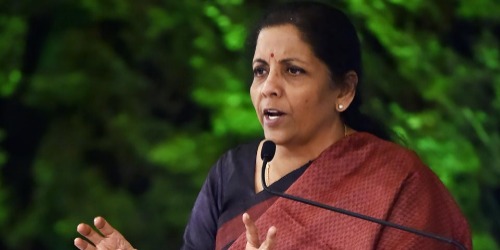
Union Finance Minister Nirmala Sitharaman on Saturday said the Centre government would keep its "compact" with states when it comes to sharing of cess collected through Goods and Services Tax (GST). She said there was a delay in transfer of cess to states as it was not "adequate". "In the last GST collection, the cess fund wasn't adequate ...so the states didn't get the 14 per cent compensation. When we collect the required cess, we will honour the compensation rate," the FM said at the Hindustan Times Leadership Summit in New Delhi on Saturday. The FM also added: "It's not that the compact has been broken. The compact will be honoured".
Kerala had last week threatened to drag the Centre to the Supreme Court over delay in compensation to states. Notably, the Centre is yet to pay states' GST share due for the past four months. The finance ministers of Kerala, Delhi, Rajasthan, Punjab, Chhattisgarh and Madhya Pradesh had even met the FM in this regard this week.
The Goods and Services Tax (GST) panel, which is concerned over the declining revenue, is planning to introduce several key measures to increase collection, including increasing the 5 per cent tax slab to 6 per cent and raising tax on cigarettes and aerated drinks. The high-powered GST panel is scheduled to hold crucial consultations with states and GST officials on December 18. However, there is no official confirmation in this regard.
A Business Standard report earlier said raising of the tax slab to 6 per cent could bring in additional revenue of over Rs 1,000 crore a month to the government. "An idea that has emerged is increasing the 5 per cent slab to 6 per cent, which will mean 3 per cent GST each for the Centre and states. Some states are arguing that this will mean a 20 per cent increase in the tax rate. But in value terms it will not be much," a government official told daily.
There are a total of five tax slabs, including zero, 5 per cent, 12 per cent, 18 per cent and 28 per cent. Of these, 18 per cent tax slab accounts for a maximum of 60 per cent GST tax collection, while 5 per cent tax slab accounts for just 5 per cent. Other two slabs -- 12 per cent and 28 per cent -- generate 13 per cent and 22 per cent tax revenue of the total collection for the government.
In a bid to tackle dwindling GST collections, the government had formed a committee of officers in October this year to suggest measures to boost collections and make businesses comply voluntarily. The committee has commissioners from state GST council of Maharashtra, Tamil Nadu, Uttar Pradesh, West Bengal, Punjab along with Joint Secretary and Executive VP of GST Council.
The committee was formed after GST collections fell sharply to a 19-month low of Rs 91,916 crore in September. Tax collections stood at Rs 95,380 crore in October. However, in a little respite, the GST collections crossed Rs 1 lakh crore mark to Rs 1.03 lakh crore in November. After two months of negative growth, GST revenues witnessed recovery with a positive growth of 6 per cent on a yearly basis during the month under review.
- 0
- Leave a comment
5% GST rate may be hiked to 6% as govt looks to increase revenue
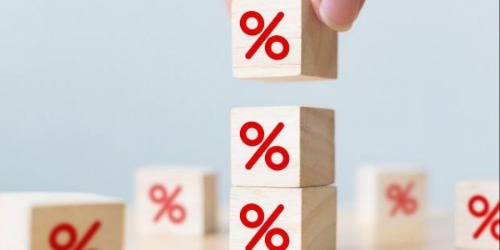
In wake of growing revenue concerns, the Goods and Services Tax (GST) council may consider revamping tax structure and raising the existing 5 per cent rate to 6 per cent to shore up the shortfall in collections. The slab restructuring may help government garner additional revenues of Rs 1,000 crore per month.
As of now, the GST has four slabs of 5 per cent, 12 per cent, 18 per cent and 28 per cent. The 5 per cent slab includes essential commodities such as food items, footwear and basic clothing.
According to the government data, the 5 per cent slab contributes to nearly 5 per cent of GST collection. The government's monthly GST collection target is about Rs 1.18 lakh crore.
The GST panel, chaired by the union finance minister and comprising finance ministers of states, will meet on 18 December to examine various measures to boost revenue collection, including review of the tax structure, compensation cess rates and exempted items. According to Report, the GST Council secretariat has sought inputs from states on all these issues at the next meeting.
"An idea that has emerged is increasing the 5 per cent slab to 6 per cent, which will mean 3 per cent GST each for the Centre and states. Some states are arguing that this will mean a 20 per cent increase in the tax rate. But in value terms it will not be much," a government official told daily.
In a bid to tackle dwindling GST collections, the government had formed a committee of officers in October this year to suggest measures to boost collections and make businesses comply voluntarily. The committee has commissioners from state GST council of Maharashtra, Tamil Nadu, Uttar Pradesh, West Bengal, Punjab along with Joint Secretary and Executive VP of GST Council.
The committee was formed after GST collections fell sharply to a 19-month low of Rs 91,916 crore in September. Tax collections stood at Rs 95,380 crore in October. However, in a little respite, the GST collections crossed Rs 1 lakh crore mark to Rs 1.03 lakh crore in November. After two months of negative growth, GST revenues witnessed a recovery with a positive growth of 6 per cent on the yearly basis during the month under review.
Manufacturing capacity utilisation declines to 68.9% in Q2FY20, lowest since 2008
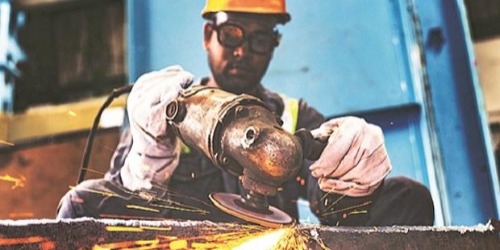
India's manufacturing sector capacity utilisation nosedived 68.9 per cent in the September quarter (Q2FY20), hitting its lowest level since 2008. The capacity utilisation stood at 73.7 per cent in April-June quarter of 2008 (Q1FY18). This clearly indicates the severity of the ongoing slowdown in manufacturing sector and weak demand environment.
Data released by the Reserve Bank of India (RBI) showed that capacity utilisation was at 73.6 per cent in June quarter (Q1FY20). In January-March quarter of 2019, corporate production capacity had improved gradually to a six-year high of 76 per cent from 71 per cent during demonetisation.
Capacity utilisation is a measure of the extent to which an enterprise uses its productive capacity and is also a key indicator of demand in the economy. A figure close to 100 per cent signals full-capacity utilisation, which may lead to pick up in corporate investments and its profitability.
"The slowdown in manufacturing activity was also reflected in the decline in capacity utilisation to 68.9 per cent in Q2FY20 from 73.6 per cent in Q1 in the early results of the Reserve Bank's order books, inventories, and capacity utilisation survey (OBICUS)," the RBI said in its fifth bi-monthly monetary policy statement.
As per the data, seasonally adjusted capacity utilisation fell to 69.8 per cent in Q2FY20 from 74.6 per cent in the previous quarter.
"Growth in the services sector moderated, weighed down mainly by trade, hotels, transport, communication, broadcasting services and construction activity. However, growth in public administration, defence and other services accelerated in line with the surge in government final consumption expenditure," the statement said.
On a quarterly basis, the Index of Industrial Production (IIP) contracted by 0.4 per cent during July-September quarter (Q2FY20), compared to 3 per cent expansion in Q1FY20 and 5.3 per cent growth in the same quarter last year. Industrial output shrank to the lowest level in eight years to 4.3 per cent in September as compared to a contraction by 1.4 per cent in August 2019 and a growth of 4.6 per cent in factory output in the same month a year back. The data showed that all three broad-based sectors of capital goods production, consumer durables, and infrastructure and construction goods contracted.
Meanwhile, output of eight core industries - which constitute 40 per cent of the IIP -contracted for the second consecutive month in October, dragged down by coal, electricity, cement, natural gas and crude oil.
According to the early results of the Reserve Bank's industrial outlook survey, overall sentiment in the manufacturing sector remained in pessimism in Q3FY20 due to continuing downbeat sentiment on production, domestic and external demand, and the employment scenario.
Controversial Citizenship (Amendment) Bill Cleared By Cabinet
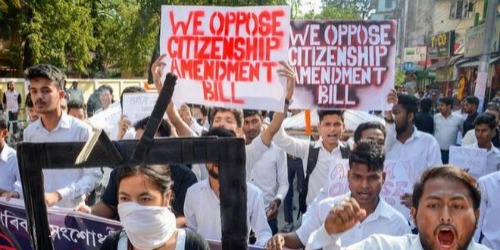
The Citizenship (Amendment) Bill or CAB, which seeks to make it easier for non-Muslim refugees from Pakistan, Bangladesh and Afghanistan to become citizens of India, has been cleared by the cabinet for tabling in parliament. The bill was passed by the Lok Sabha in January but lapsed without being cleared in Rajya Sabha. Defence Minister Rajnath Singh on Tuesday told BJP parliamentarians that the bill is top priority for the government, as important as the Article 370 decision to end special status to Jammu and Kashmir.
Here is your 10-point cheatsheet to the Citizenship (Amendment) Bill:
1. The Citizenship (Amendment) Bill aims at granting Indian citizenship to people from six communities - Hindus, Christians, Sikhs, Jains, Buddhists and Parsis -- who had migrated to India without valid travel documents or whose documents have expired. The bill amends a 1955 law to grant exemptions to illegal migrants from these six communities, who reached on or before December 2014.
2. The opposition alleges that the bill targets Muslims and is at odds with the secular principles enshrined in the constitution as it excludes a community. According to critics, the move is a violation of Article 14 which guarantees the right to equality.
3. The Citizenship Act 1955 says those seeking citizenship must have lived in India in the 12 months before their application and for 11 years of the previous 14 years. The amendment seeks to relax the second requirement from 11 to six years for non-Muslim applicants from the three neighbouring countries.
4. Reports suggest other revisions to clearly differentiate in the new bill between those who are the "illegal immigrants" and those who took shelter in India after facing religious persecution in the neighbouring countries.
5. There have been protests against the move in northeastern states, which are concerned about citizenship to a large number of Hindus who have crossed over from Bangladesh over the decades. BJP's Assam ally Asom Gana Parishad (AGP) had earlier opposed the bill when it was cleared by the Lok Sabha in 2016 and even pulled out of the ruling coalition in protest. When the bill lapsed, the AGP returned.
6. The bill was tabled in Lok Sabha in 2016 and was referred to a Joint Parliamentary Committee, which submitted its report in January this year. The Bill was passed in the Lok Sabha but parliament ended in February without the proposed law getting Rajya Sabha clearance.
7. The bill is set to clear Lok Sabha easily but in Rajya Sabha, where the government is in a minority, the numbers are more challenging. The Congress, Trinamool, DMK, Samajwadi Party,Left and Rashtriya Janata Dal have opposed the bill. But parties like AIADMK may tip the balance.
8. On October 1, Home Minister Amit Shah had controversially said the government would carry out an Assam like NRC or citizen's registry in Bengal after bringing in the new Citizenship law. But last month, while announcing a nationwide NRC exercise, he said in parliament: "NRC has no such provision which says that certain religions will be excluded from it. All citizens of India irrespective of religion will figure in the NRC list. The NRC is different from Citizenship Amendment Bill."
9. Defending the citizenship move, Rajnath Singh said yesterday that the three neighbouring countries were essentially Islamic nations and so it is non-Muslims and not Muslims who are at the receiving end of religious persecution there.
10. "Minorities in the neighbouring theocratic countries have been subjected to continuous persecution, which forced them to seek asylum in India. Giving citizenship to six minorities is in the spirit of Sarva Dharma Sambhav," Mr Singh said.
Unemployment rate falls to 7.48% in November; labour participation rate lowest since 2016
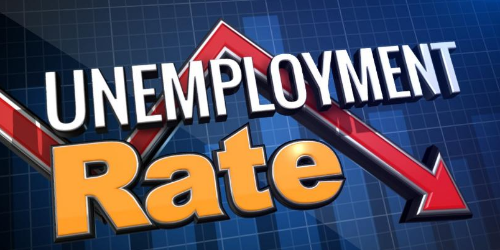
The unemployment rate fell close to 1 per cent in November to 7.48% from 8.45% in October 2019, according to Centre for Monitoring Indian Economy (CMIE) data. The unemployment rate which has been on an upward swing since June 2017. In the month of October this year, unemployment rate had touched a three-year high of 8.45%. In the preceding months of September and August, the unemployment rates were 7.16% and 8.19%, respectively.
According to CMIE data, labour participation rate decreases at an all India level. A lower labour participation rate means fewer people are willing to work. Labour participation rate has fallen to lowest-ever of 42.37% in November 2019 from 47%-48% (with an unemployment rate of 8%) in 2016 when the survey started.
Urban unemployment rate stood at 8.89% whereas the rural unemployment rate was at 6.82% during the month of November 2019. Rural unemployment displayed a sharp drop from 8.26% in October. Urban employment was at 8.84% in October, showing a slight increase.
On a quarterly basis, the unemployment rate has increased since September 2017, barring an exception in June quarter of 2018 when it showed a minor decrease. In 2017 June quarter the unemployment rate stood at 4.01% which has sequentionally increased to 7.64% in September quarter of 2019. On a quarterly basis, highest unemployment rate of 9.12% was recorded in the quarter ending June 2016. The lowest unemployment rate of 4.01% was recorded in the quarter ending June 2017.
In November 2019, top 5 states/UTs with highest unemployment rates are Goa (34.5%), Tripura (25.9%), Himachal Pradesh (23.3%), Haryana (20.7%) and Delhi (16%). Bihar and Uttar Pradesh have unemployment rates of 13.1% and 8.15%, respectively.


